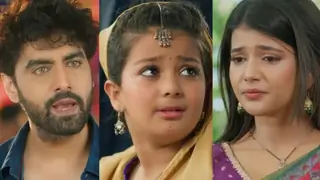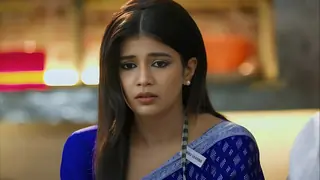
Through revamped formats, reworked storylines and interesting channel concepts, Indian television is trying to reach out to young, aspirational India. Divya Kaushik analyses the trend
Wailing wives, treacherous in-laws and plotting husbands. They ruled our living rooms for almost a decade, but it's time to bid adieu to them.
Or, have we already done so? It seems we have. The changing taste of the audience has led to increased experimentation. And, such is the competition among channels that a battle-like situation has emerged to control the television industry which is estimated to reach the Rs 420 billion mark by 2013.
So, who rules the audience today? It seems an era of coalition has descended on the small screen, quite unlike a one or two-channel regime not very long ago. Unlike in the past, when either Star Plus would rule the hearts of the masses with programmes like Kahaani Ghar Ghar Kii and Kyunki Saas Bhi Kabhi Bahu Thi, or Zee would enthrall the viewers with Astitva and Antakshari, every channel today enjoys an average viewership. Each has its distinct identity and, of course, a loyal viewership.
It all began with Colors which successfully took on the saas-bahu combo with its programmes like Balika Vadhu and Na Aana Is Desh Laado, set in rural milieu with relevant social messages. Sony took the cue and ensured that the weepy women of Indian television make way for the older, mature men. So, now a portly Ram Kapoor plays a middle-aged tycoon in Bade Achhe Laggte Hai, Mohnish Behl does the role of a brooding doctor in love with a much younger intern in Kuch Toh Log Kahenge, Samir Soni effortlessly carries forward his grey character in Parichay, and Ronit Roy plays a righteous lawyer in Adaalat. The channel has further consolidated the gains with Parvarrish, dealing with the dilemmas associated with the upbringing of children. To top it all, Ekta Kapoor, the queen of most women-related sob soaps, is now busy with several middle class stories with male actors as lead.
Even where female characters are the lead, they do not survive on plotting against other people. Sony's Saas Bina Sasuraal is all about a female protagonist who changes the life of her family post-marriage. She takes control of the entire household that was carelessly being managed in her absence. Saathiya on Star Plus features a dabangg saas who helps her coy daughter-in-law shed inhibitions and open up. Hitler Didi and Afsar Bitiya on Zee, again, revolve around female leads who very well manage their lives and are almost real-life characters.
"We need to cater to the changing taste of the audience. With the evolution of cinema in India, even TV is expected to deliver some fresh storylines and come up with concepts that can impress the viewers. Impractical stories based on plotting and foul play no more do the trick. We need real-life stories and characters to reach the audience today," says Sanjeet Saha, vice-president, international business, Star Networks.
Saha is supported by Ajay Bhalwankar, head of programming, Zee. "Be it fiction or non-fiction, we have planned some ground-breaking changes in our programming. Serials like Afsar Bitiya are a perfect example; it is an attempt to touch the hearts of people with a story that every girl in a small town can relate to," he says.
New Themes and ideas
Recently, Star One was replaced by Life OK. The new channel, it is said, targets the young, aspirational Indians who, in pursuit of happiness and ambition, put at stake social values. It features mythological tales of Lord Shiva, a story of a newly-married woman trapped with a sadist husband, and how a modern-day couple copes with differing opinions about a 'perfect' life. Interestingly, the channel has yesteryear actor Madhuri Dixit as sutradhaar to talk about values through these programmes.
"The channel does not target any age group but a mentality. We are not preaching. Instead, we promote values that we keep at stake while pursuing our goals and aspirations. We are not saying that we should not chase our dreams, but we need to draw a line, cherish what we have and maintain a balance," says Ajeet Thakur, general manager, Life OK. Even the reality show, Sacch Ka Saamna 2, has been revamped to suit the channel's tagline.
Perhaps, TV channels have realised that it is not just the homemakers who make the household and are finally addressing to the youth and their issues. The best example can be Viacom 18's new channel, Sonic. Being widely promoted by actor Akshay Kumar, it focusses on action and thriller and targets teenagers. "We realised that there was nothing on TV for the teenagers who now do not think like teenagers once did. Thirteen is the new 18, and they demand fresh content, something adventurous and something that can give that adrenaline rush," says Nina Elavia Jaipuria, executive vice-president and general manager, Sonic and Nick India.
History Channel's Sangeetha Aiyar urges us to recognise the fact that there is huge fragmentation of the viewership. "Today, viewers will pay what they want to watch. So, in such a scenario it becomes mandatory to keep working on content," says the spokesperson of the channel, which has achieved 50 per cent growth in the past few months.
"Before this year, there was too much of negativity on TV and the basic purpose of revamped formats was to look beyond depressing things. Programmes like Parvarrish and Bade Achhe Laggte Hai sound very much real and, therefore, people can connect with them. Today the demand on TV is of content that represents modern India and its issues, but at the same time is packaged with fun and is a family entertainer," says Virendra Shahane, programming head for fiction shows on Sony.
Actor Sakshi Tanwar agrees. "Modern stories attract youngsters easily and they start relating with reel lives. The change that we are seeing on TV is aimed at addressing the needs of all sections of Indian society," says she.
From global to REGIONal
India's TV industry seems to have come a full circle in the past two decades. In the 1990s, media companies seized on new opportunities in the country after the Government, which had controlled broadcasting for almost 50 years, began releasing its vice-like grip post its decision to liberalise the economy. In fact, the Government for decades had pursued a contradictory policy on the issue: On the one hand, it considered the media too powerful a force to be left to the private sector. And, on the other hand, it was seen as too frivolous to merit much attention and investment. So, in 1995, when the Supreme Court declared the Government's monopoly over broadcasting "unconstitutional", it opened the doors for private players. This helped Indian sensibilities merge with global programmings. We became part of the global whole. The process has reversed now: TV channels are now going regional. In fact, some serials are even aiming to win over a particular community or region. So, while Saathiya remains a big hit among Gujaratis, Yeh Rishta Kya Kehlata Hai targets the Marwari population across the country.
Interestingly, even Discovery India has made suitable changes in its content as per regional demands. "Today it is important for a channel to reach out to people in their own language so that they can connect with the theme, the idea and the channel. Since the beginning, Discovery India has made major changes and always given importance to the regional aspirations. We have introduced series like Oh My Gold that reach out to people in remote areas," says Rajiv Bakshi, vice-president, marketing, Discovery India.
The other channel that has made the most of regional programming is SAB. Known for its comic entertainers like FIR, Taarak Mehta Ka Ooltah Chashmah and Lapataganj, the channel saw its GRPs (Gross Rating Points) rising from a meagre 40 to 213 soon after it began a series of family entertainers on various cultures and communities of the country. While Taarak Mehta... reflects the culture of Gujaratis, Lapataganj, based on Sharad Joshi's novel, throws light on the lives of people in a small Uttar Praesh town.
"This was a sheer coincidence as the two programmes are inspired from the literary works of Gujarat and Uttar Pradesh respectively. But the formula worked well for us. In today's era, it is difficult ' and almost impractical ' to come up with something that has a universal appeal. One, two or even a group of people can be in denial about the subject. So, it is better to go the easy way and target different cultures through different programmes," says Anooj Kapoor, business head of SAB.
FINITE TIMELINES
When Ekta Kapoor discovered the saas-bahu melodrama in the beginning of the millennium, she was believed to have hit a jackpot. Others were only too eager to follow her. But in 2008, TRPs of these 'regressive' family sagas plummeted. And with it came the realisation that the serials, good or bad, should have a definite timeline. Now both TV channels and production houses have understood that it is better to end a programme at high when people are enjoying it and the cast is still popular. "This way even the scriptwriters can come up with fresh ideas and people will look forward to the sequel," says a scriptwriter of a popular daily willing to remain anonymous.
It seems television programming is going the West way and we will now see more season-based soaps on small screen. "We are not looking forward to stretching the timelines of our serials for more than a year," says Bhalwankar of Zee.
"Earlier, during the good, old Doordarshan days, the quality of programmes was maintained and the audience loved them because they used to first create suspense and drama and then unfold it gradually, within a finite duration. Byomkesh Bakshi is a perfect example. People still remember it fondly. We should re-introduce this format again," says Shashank Bhatnagar of the Filmfarm India Private Ltd.
So, get ready for new ideas on television. Yes, some of them may not work, but tinkering with tested concepts is always better than living with them. But one thing is obvious: Indian television is definitely going through an interesting time.



























